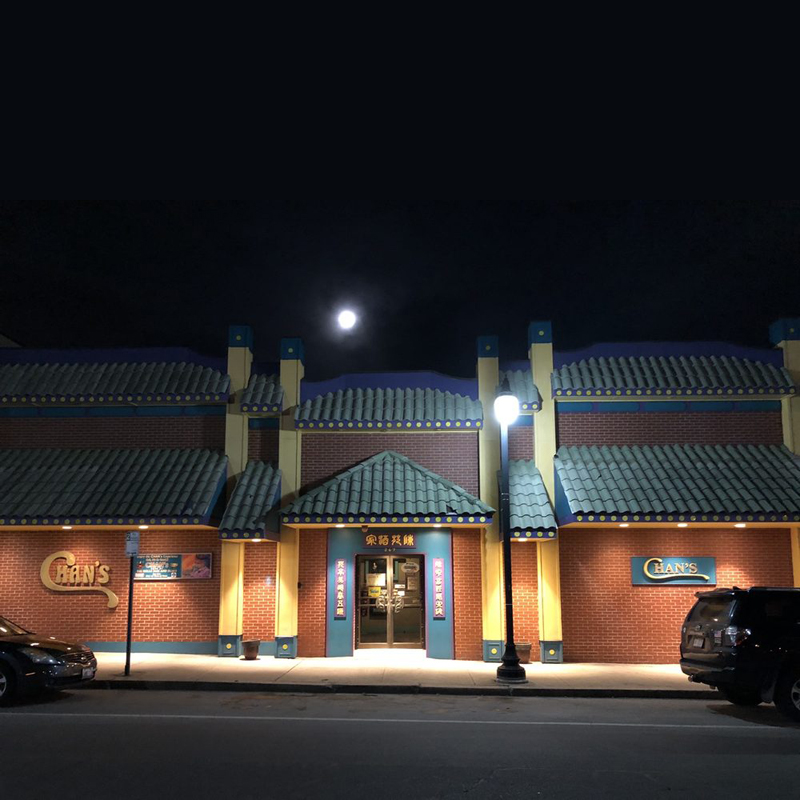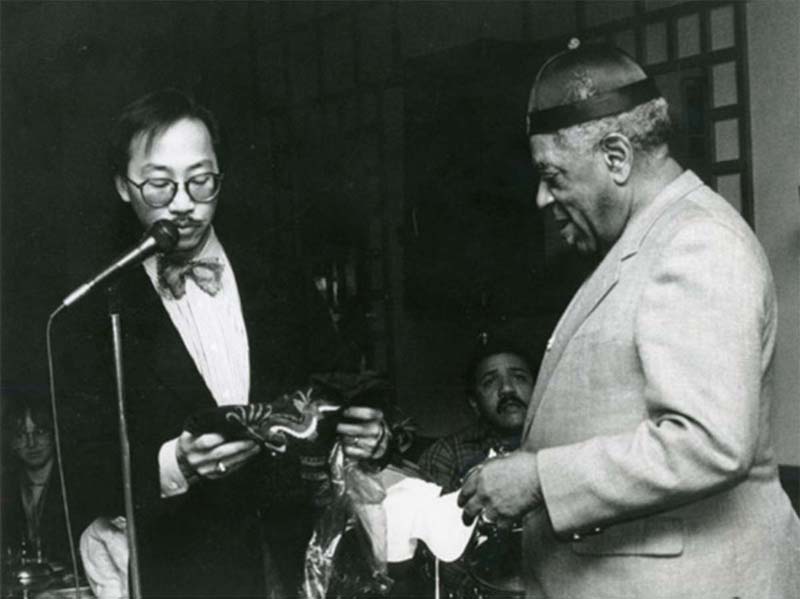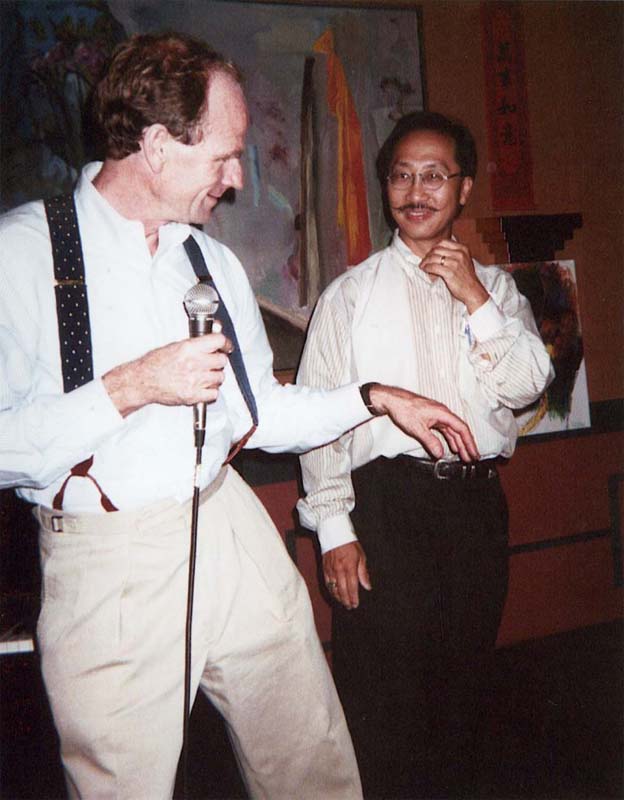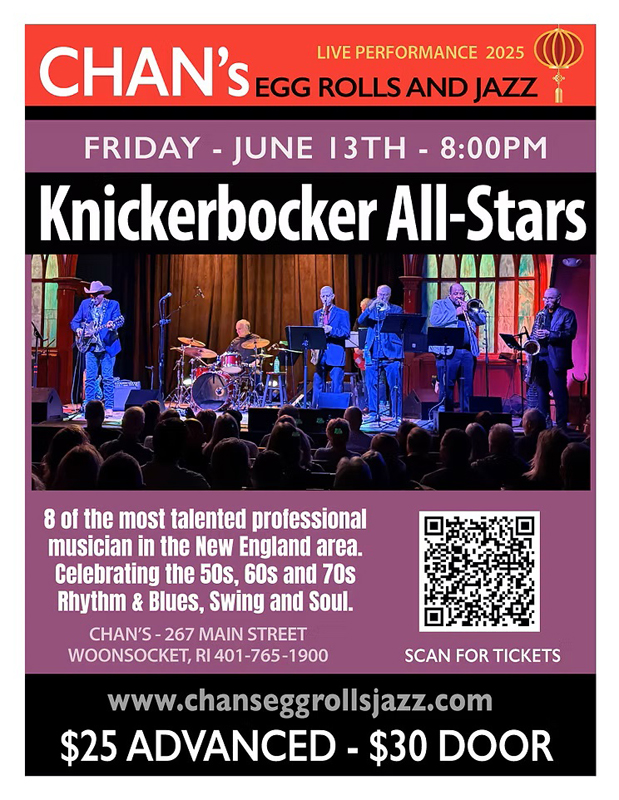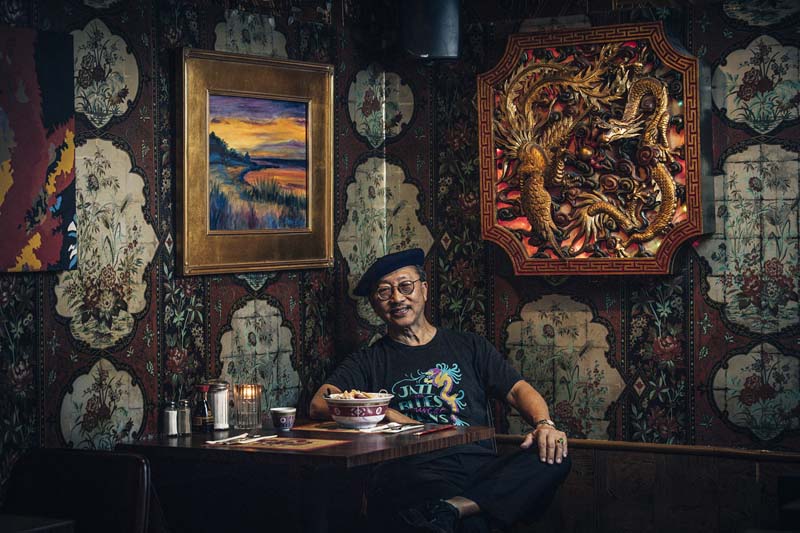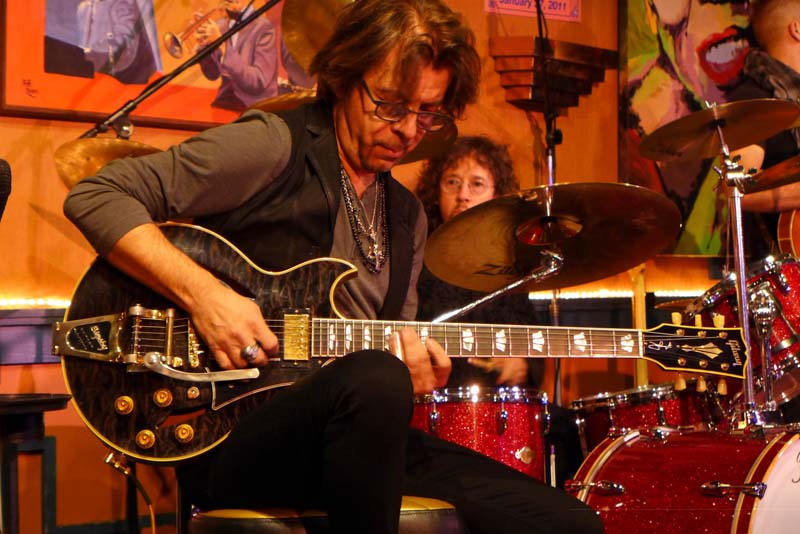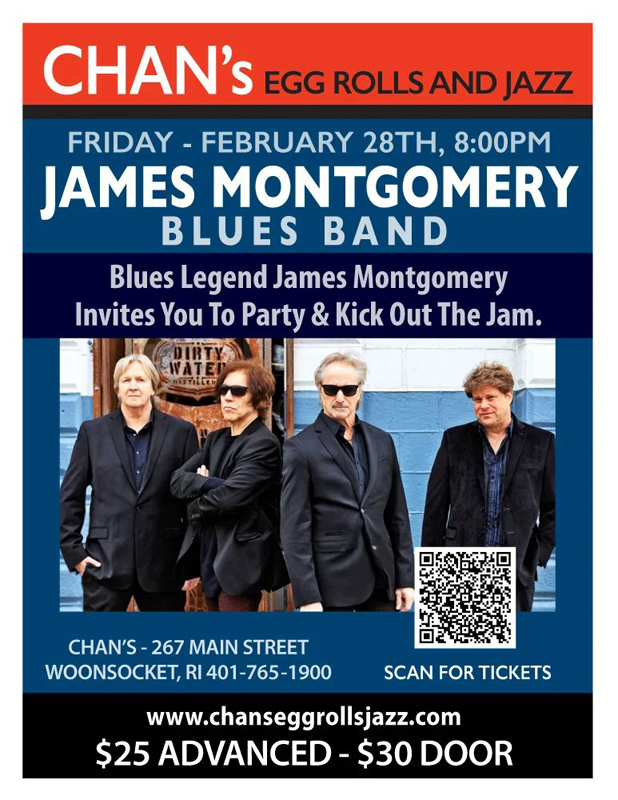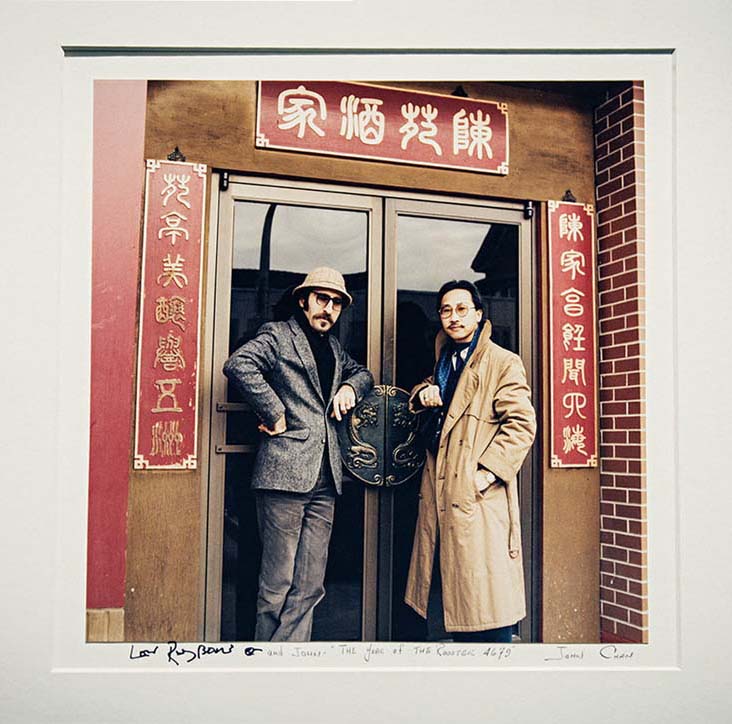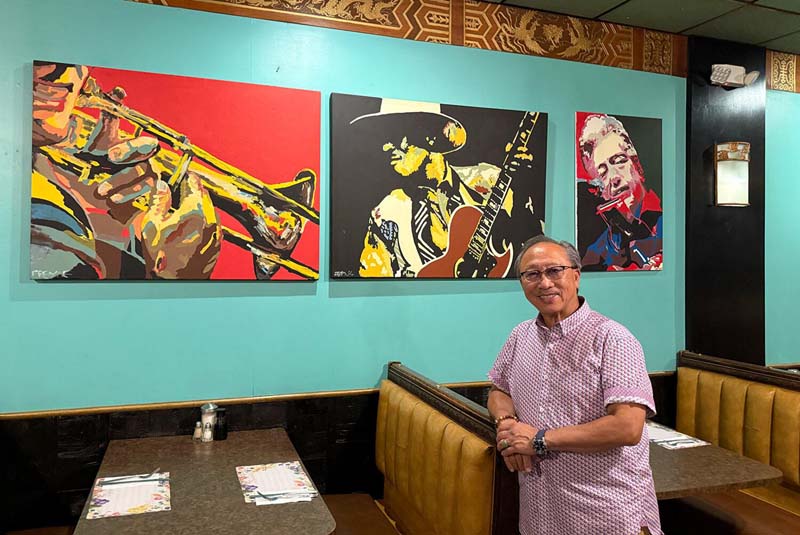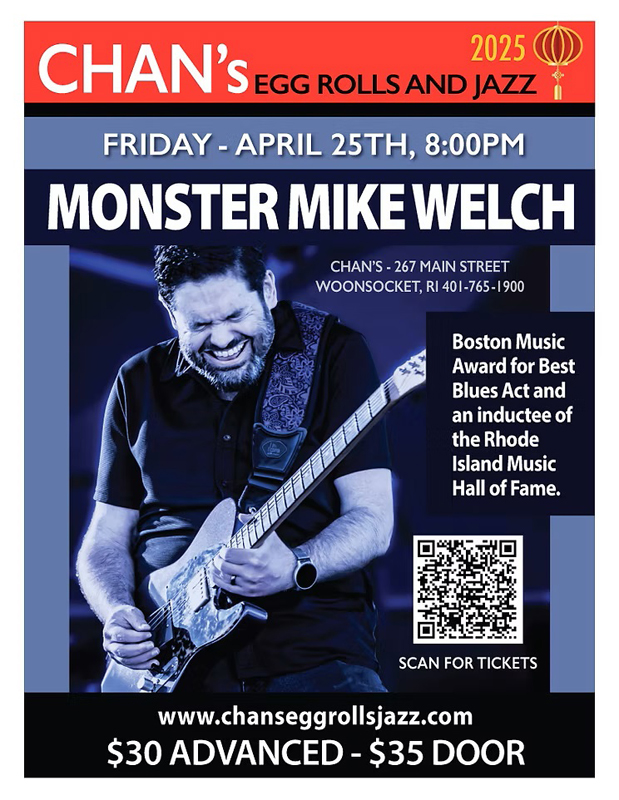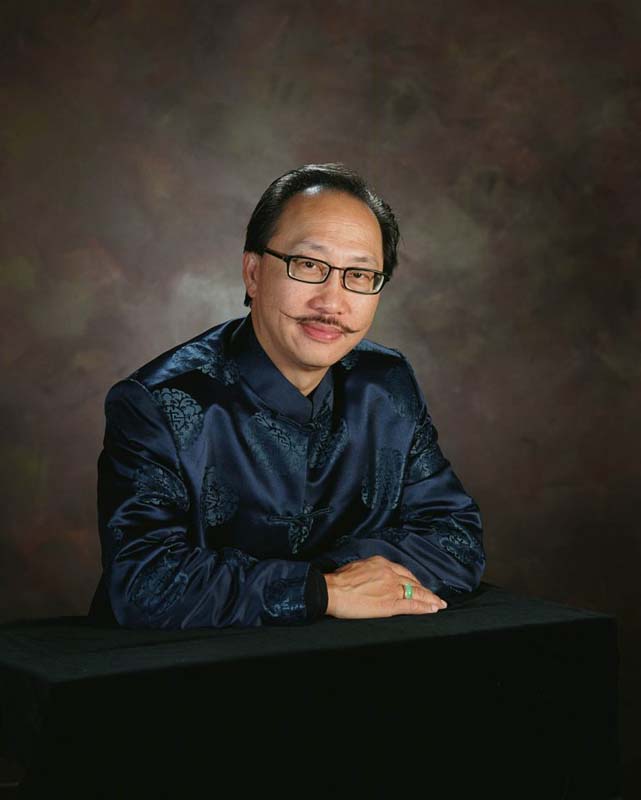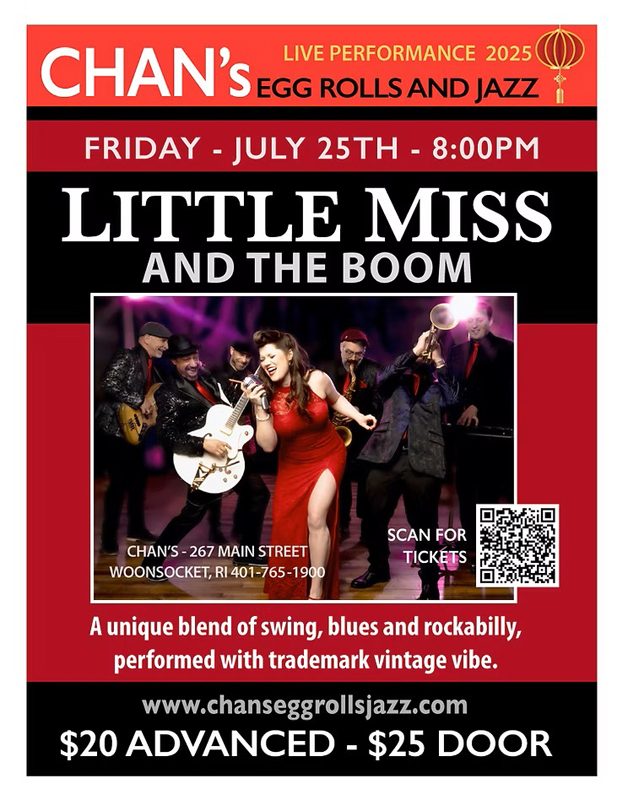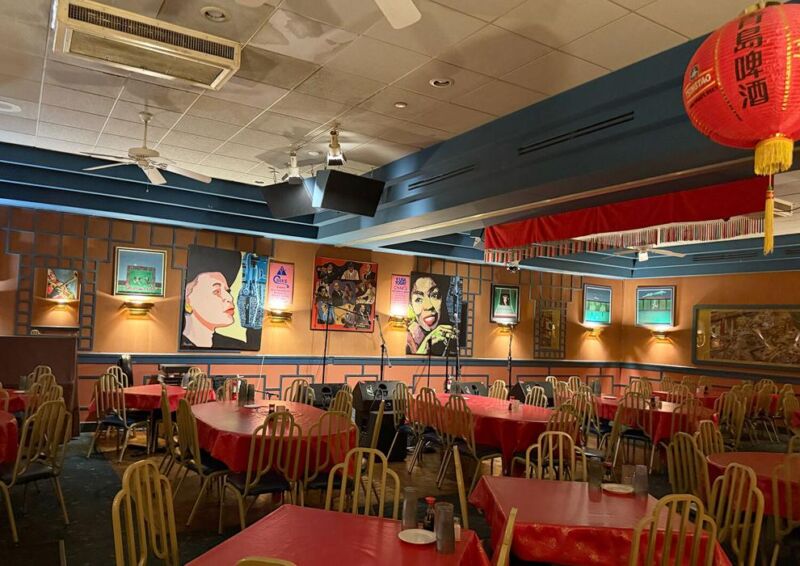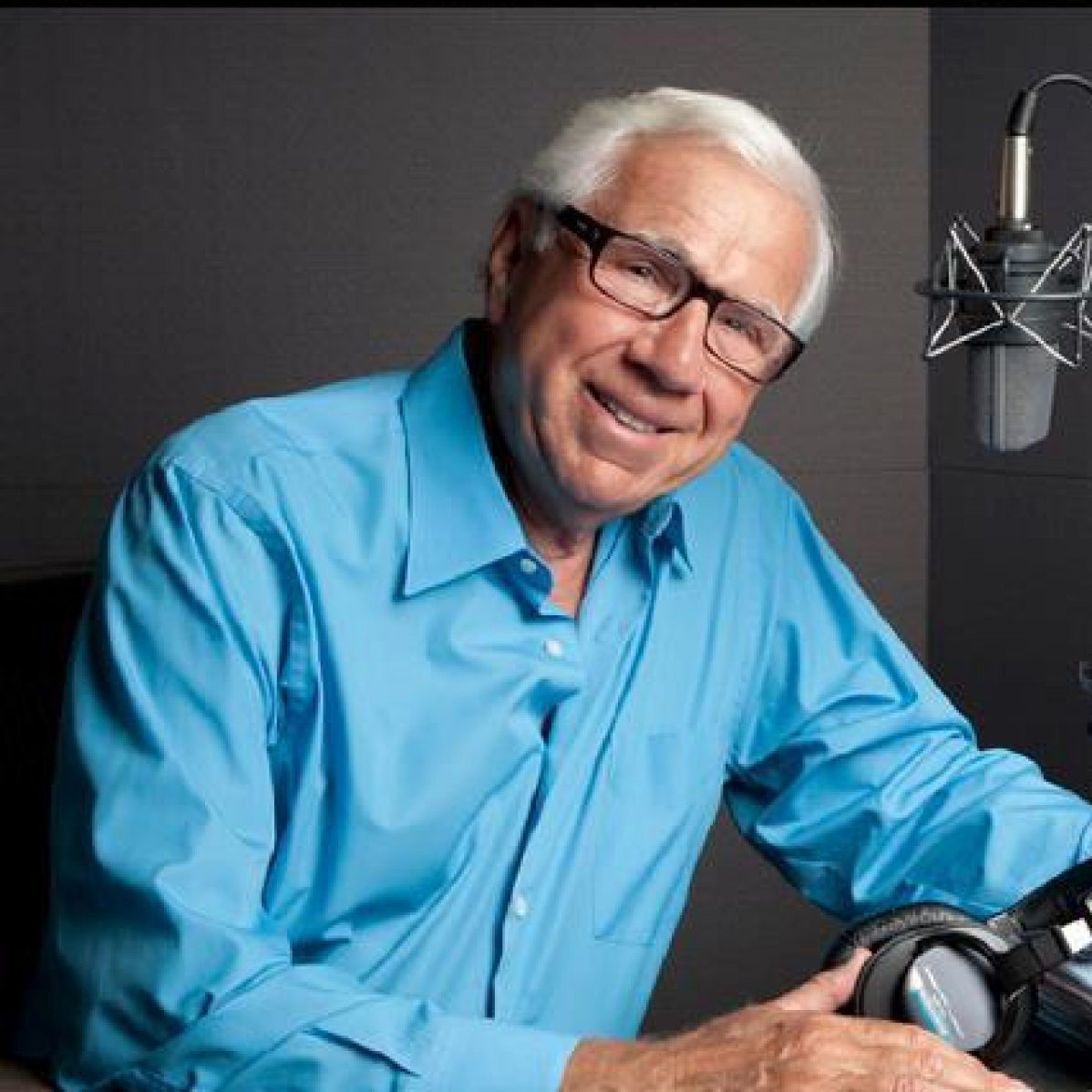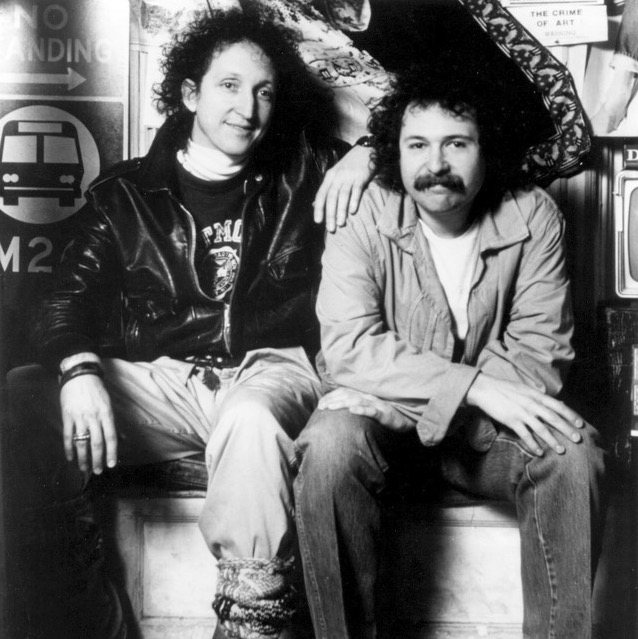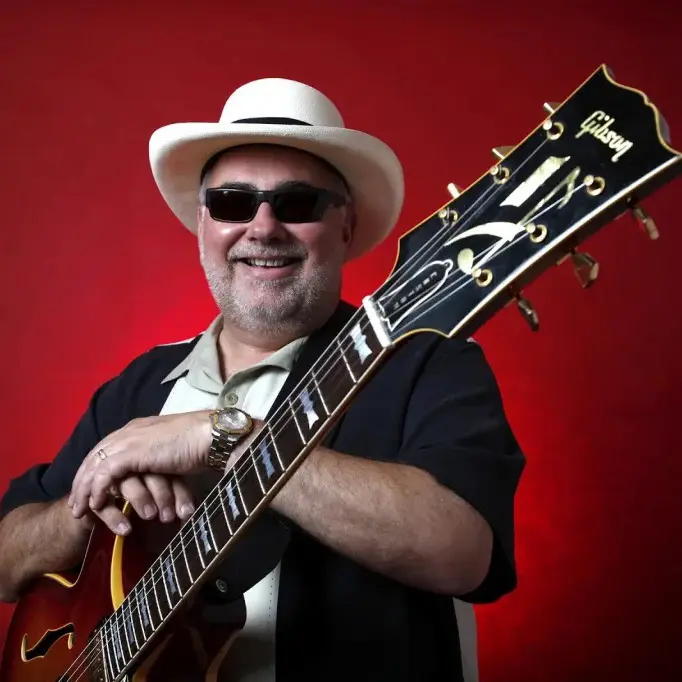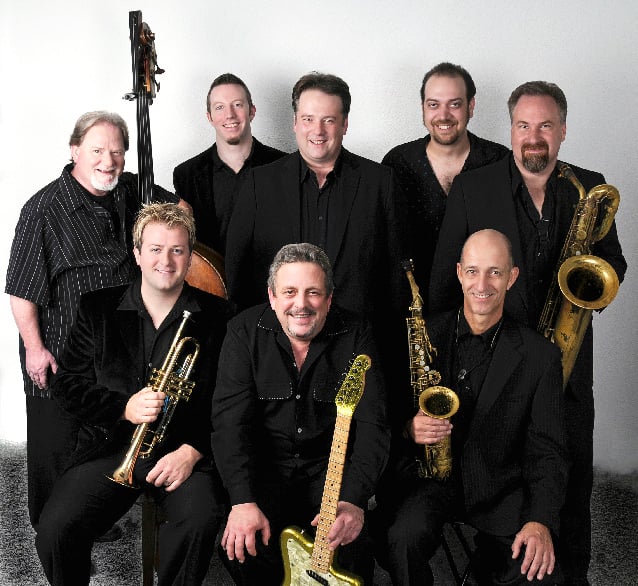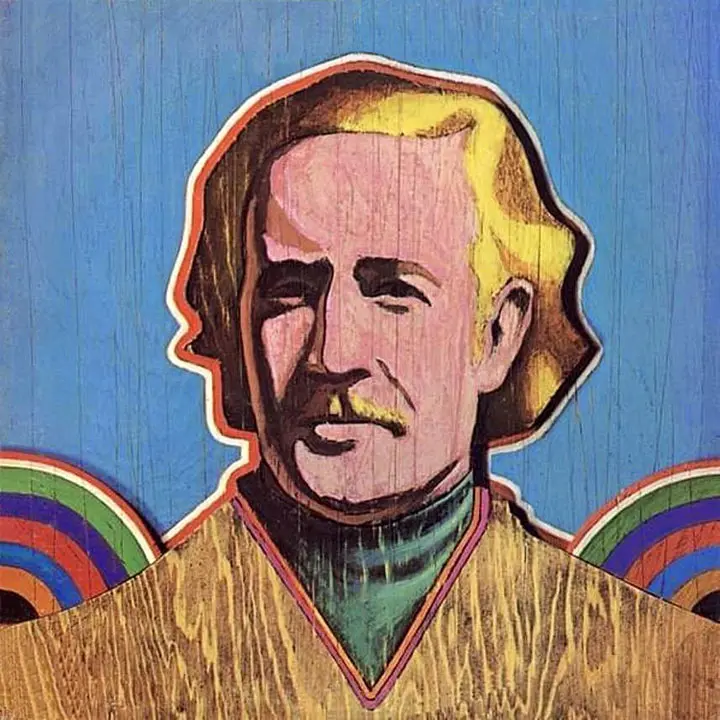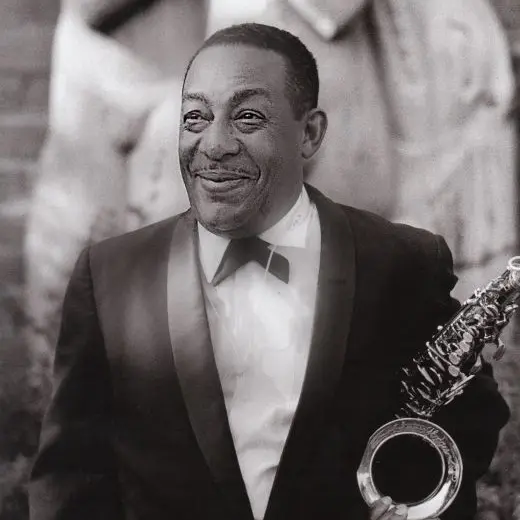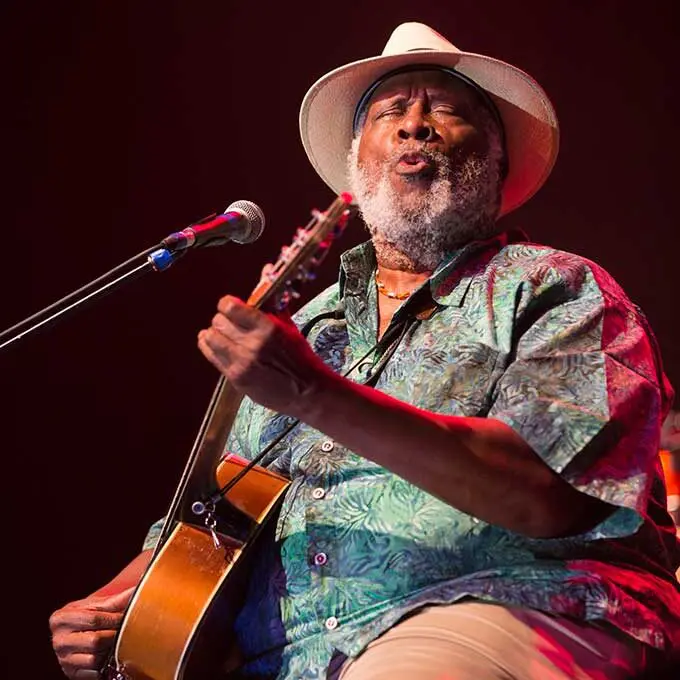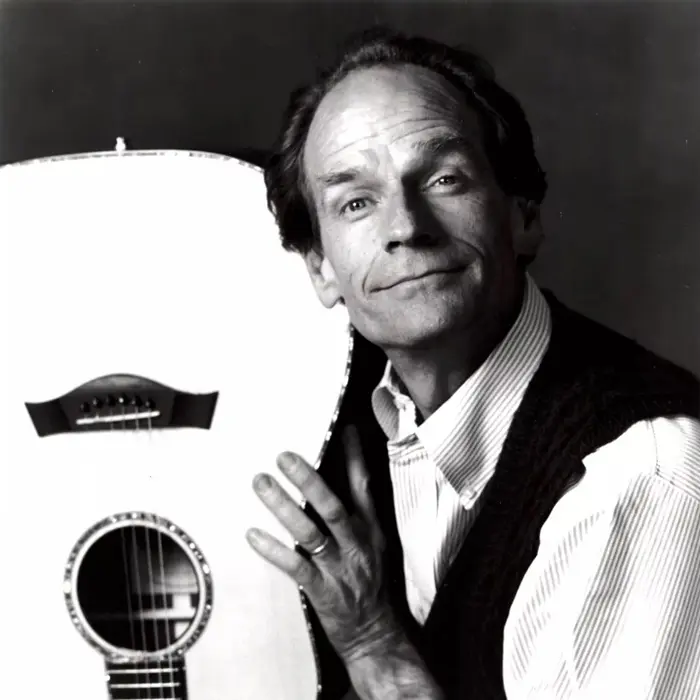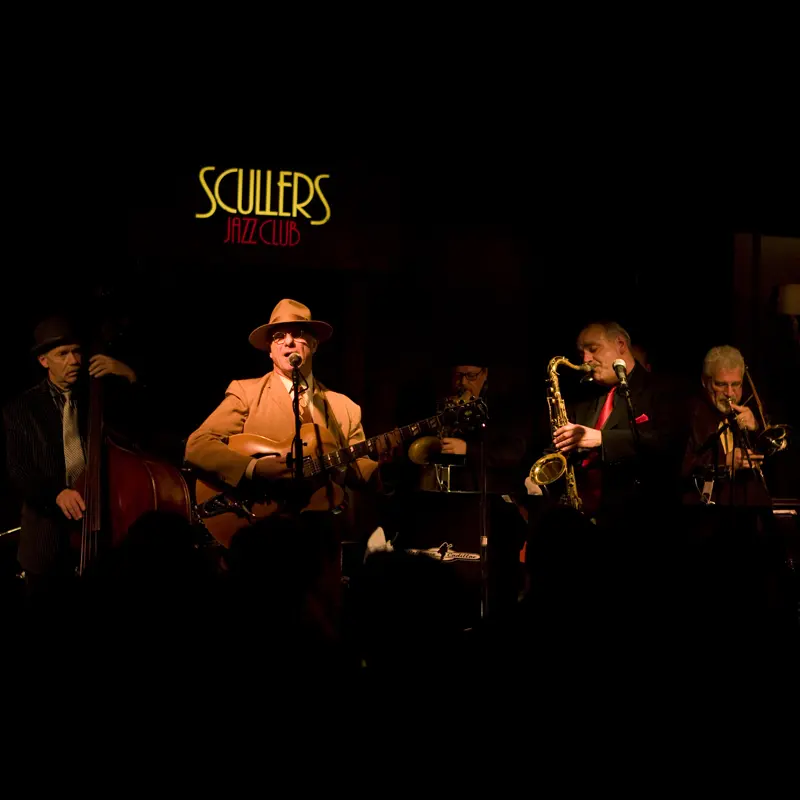Chan’s Fine Oriental Dining, Jazz & Blues
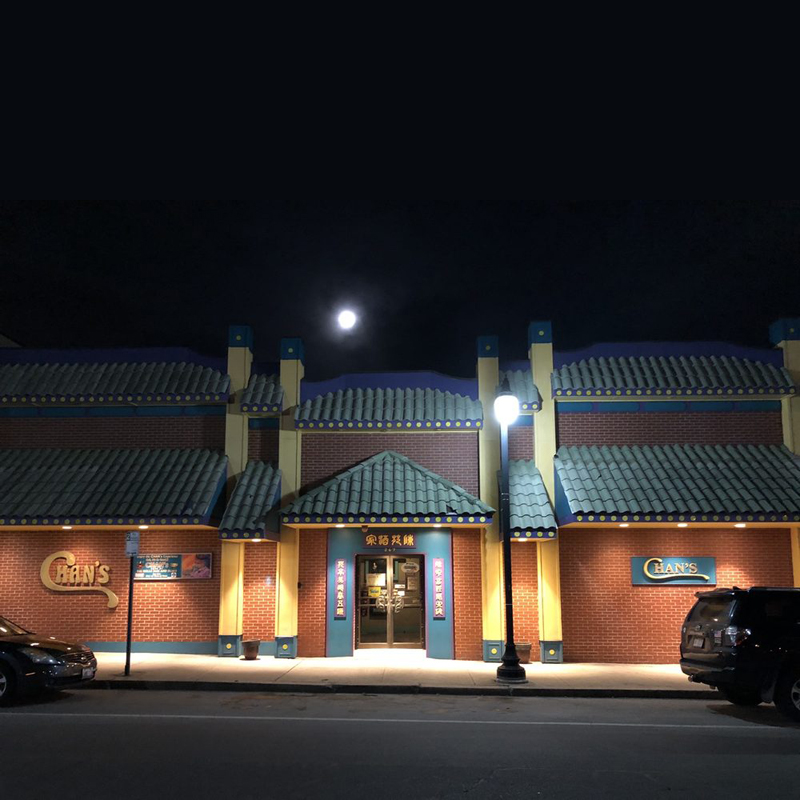
In a 2011 piece for American Blues Scene, Kirk Lang called Chan’s Fine Oriental Dining, Jazz & Blues “the most inconspicuous blues club in America,” which is as accurate as it is clever given Chan’s unassuming location: in Woonsocket, Rhode Island, the sixth largest city in the nation’s smallest state, between the Providence & Worcester Railroad and the J&M Paintball and Airsoft shop. And the venue’s humble setting is no surprise given that it wasn’t established with music in mind; it was originally a Chinese restaurant called New Shanghai that opened in 1905 and Ben Chan purchased in 1965.
The eatery’s transformation into a jazz space began in 1977 when Ben’s son John convinced his father to add live music to the menu. A decade later, the younger Chan started booking blues acts, creating a cross-cultural cornucopia for the senses by combining cuisine that originated in the villages and towns of China with music that originated in the bayous and barrooms of the American South. Promoted as the “Home of Eggrolls, Jazz and Blues,” an unofficial slogan coined by WGBH’s Ron Della Chiesa, Chan’s has hosted hundreds of regionally, nationally and internationally acclaimed artists, among the most regular being former Roomful of Blues guitarist-vocalist Ronnie Earl, Cajun-blues guitarist-vocalist Tab Benoit, Blues Hall of Famer John Hammond Jr., jazz/blues legend Mose Allison and Tin Pan Alley-style icon Leon Redbone, who made an annual appearance at the venue for 30 years.
“Musicians love coming here because I treat them like they’re coming into my home,” Chan told Lang, adding that he treats all his guests like they’re somebody special and often seats them himself. And that combo platter of great music and warm hospitality hasn’t gone unnoticed. Chan’s won a “Keeping the Blues Alive” Award from the Blues Foundation in 2011 and John, who Lang referred to as “the coolest Chinese restaurant owner,“ was inducted into the Rhode Island Music Hall of Fame in 2018. He’s also the recipient of the William Blackstone Society Award from the Blackstone Valley Tourism Council and a Pell Award for Excellence in the Arts from the Trinity Repertory Company.
BACKGROUND
Chan’s backstory begins when 12-year-old Ben Chan immigrated to the US with his family in the late 1920s from Canton (now Guangzhou). After earning a BS in electrical engineering, he worked for General Electric in Chicago until late 1945, when he returned to Canton with the hope of finding a wife in his home village. He worked for GE in China until October 1949, when Communist Party leader Mao Zedong declared the creation of the People’s Republic of China, which forced all foreign companies to exit the country and made it impossible for him to continue in his role with GE.
Chan relocated to the then British colony of Hong Kong (where John and his brother and sister were born) and started his own company, which imported X-ray machines and air conditioners. In the mid-‘50s, after the US imposed a total trade embargo on China that was a crippling blow to his business, he moved to New York City, leaving his wife and three small children behind. Arriving with about $100 in his pocket, he worked as a waiter and eventually a buyer for The House of Chan, a restaurant owned by one of his cousins. By 1962, he’d saved enough money to bring his wife and kids to the Big Apple, where they lived for the next few years in Queens; John was 10 when he arrived and spoke virtually no English.
Three years later, in 1965, another one of Chan’s cousins retired and offered Ben the chance to buy his Chinese restaurant, New Shanghai, which opened at 267 Main Street in Woonsocket in 1905. Chan took opportunity and the family relocated to the Ocean State, with everybody pitching in to keep the eatery afloat. In 1974, they renovated the space and changed the name to Chan’s Fine Oriental Dining. “I worked from the back of the house to the front of the house, from dishwasher to cook to server,” John told Vicki-Ann Downing of Providence College Magazine in 2019. “Woonsocket was a nice community, a blue-collar, working town. My family was well accepted.”
ADDING JAZZ, FIRST PERFORMANCE, BUILDING AN AUDIENCE
Chan enrolled at the University of Maine after finishing high school but, citing his hatred of the cold winters, transferred to Providence College, from which he graduated with a business degree in 1974. While studying there, one of his roommates was Joseph Small, who hosted a jazz program on the college’s WDOM-FM and introduced Chan to the music that became his passion. The first album that piqued his interest was 1973’s Verve release Blues Summit by Duke Ellington and Johnny Hodges and he became a regular at Joe’s Upstairs, a restaurant on Fountain Street in Providence that presented live acts, notably Hamilton Bates & The Blue Flames. Within a few years of graduation, Chan had become so enamored of the local jazz scene that he wanted Woonsocket to be part of it, so he asked his father if he’d be willing to give live jazz a whirl in the dining room of the restaurant. Ben, who came of age during the Big Band Era, said it was worth a try.
In 1977, jazz vocalist Jean McKenna O’Donnell became the first artist to play at Chan’s, going on to appear there for decades (often accompanied by trumpeter Dick Johnson). WGBH’s Della Chiesa, host of nationally acclaimed MusicAmerica, played a significant role in the venue’s early success by regularly plugging its shows, but it didn’t happen overnight since Woonsocket is 18 miles away from Rhode Island’s main music center, Providence. “It took a long, long time to get people to drive north of Providence to hear music,” Chan told Downing, adding that a “consistency of quality” eventually drew them in.
FOUR SEASONS BANQUET ROOM, EXPANDED ROSTER, DESIGN
In 1984, by which time Chan’s had established itself as among the top jazz venues in Southern New England, John seized the opportunity to double the size of the venue when a Fleet Bank branch in the same building closed. After renovating the space (but keeping the vault in place), he opened it as the Four Seasons Banquet Room in 1986; with a capacity of about 130 and two heavy doors that keep the music from bothering customers in the lounge and dining room, it’s now Chan’s primary performance area and is also used for wedding receptions, business meetings and other gatherings. John expanded the jazz-centric roster after adding the new room by bringing in blues and folk artists, comedians and cabaret acts and, though the venue’s been mainly a blues spot for the past few decades, its jazz roots are obvious; oversized acrylic paintings of Ella Fitzgerald and Sarah Vaughan flank the stage while the one of Muddy Waters is in the corner of the room, behind the bar.
Chan’s includes other notable art on its walls, including portraits of Ben, who died in 1980 at age 64, and John’s mother, Ethel, who died in 2017. The dining room ceiling is made of stamped teak tiles and the walls are decorated with acrylic paintings of Duke Ellington, Taj Mahal, Tommy Dorsey, Miles Davis, Ray Charles, Reverend Gary Davis and John Hammond Jr., each painted by George Frayne IV (better known by his stage name, Commander Cody). Just past the hand-carved rosewood front door, which Chan’s parents imported from China, is a case housing statues of the Chinese symbols for happiness, prosperity and longevity.
NOTABLE 2000S APPEARANCES, LIVE ALBUMS, MENU
Among the best-known acts that have appeared at Chan’s over the last 25 years are NRBQ, Luthur “Guitar Jr.” Johnson, James Montgomery, The Duke Robillard Band, James Cotton, Johnny A., David “Honeyboy” Edwards, Barry Goudreau’s Engine Room, Buckwheat Zydeco, Albert Cummings, Livingston Taylor, Danny Klein, Joe Louis Walker, Samantha Fish, Aztec Two-Step, Greg Abate, Ana Popovic and Maria Muldaur. Others include Watermelon Slim, Eric Sardinas, Shemekia Copeland, Coco Montoya, Lil’ Ed & The Blues Imperials, The Devon Allman Band, Tommy Castro & The Painkillers, Poppa Chubby, Magic Slim & The Teardrops, John Nemeth, The Peacheaters and Rick Estrin & The Nightcats. Several artists have recorded live albums at the venue, including Rebecca Parris (Live at Chan’s, 1998), Bellevue Cadillac (Take Out, Out Takes, 1999) and Nick Moss & The Flip Flops (Live at Chan’s, 2006 and Live at Chan’s – Combo Platter No. 2, 2009).
With all the art on the walls and music in the air, it’s easy to forget that food is a fundamental part of Chan’s, which serves four varieties of Chinese cooking: Cantonese, Szechwan/Hunan, Mandarin and Shanghai. The restaurant, which offers catering, take-out and delivery and has a drive-up window, has about 25 full- and part-timers (including five chefs) and Chan says it remains the core of the business. “Food is the main attraction at Chan’s and always has been,” he told Downing. In 2011, USA Today named Chan’s among the “10 Great Places to Savor Chinese Food,” citing the chow mein sandwich in particular: noodles on two slices of white bread smothered with a gravy made of onions and celery.
Now in his mid-70s, Chan’s passions besides music are cooking, painting and photography and he’s been on the set during the filming of several movies by fellow Rhode Islanders Peter and Bobby Farrelly, appearing on camera in their 2005 film Fever Pitch and in an episode of the Showtime series Brotherhood (as a Chinese restaurant owner), which was filmed in Providence. Asked if he’s ever considered pursuits outside of Chan’s, he said he has but that it’s difficult to find the time because his wife and son don’t work in the business and there aren’t any other family members who could take over. “Maybe I’ll find a buyer one day with the same interests and keep the music going,” he told Downing, adding that his fellow Rhode Islanders have made Chan’s success possible. “My life has been continuously influenced by both the visual and performing arts – cooking, photography, painting, enjoying live performances – and Rhode Island has been good to the Chan family,” he said. “We’re grateful for the support and friendship.”
In mid-August 2025, Chan announced that he was ready to retire and that he’d put Chan’s on the market through Woonsocket-based Garrett Mancieri Real Estate. According to the listing, the property includes nearly 7,000 square feet of space in addition to off-street parking in a large lot directly across the street. While both the real estate and the business are included in the sale, potential buyers have the option of purchasing either one separately. The venue will be open during the selling process. Chan said. and it could remain in its present form for many years to come. depending on the buyer and terms of the deal.
(by D.S. Monahan)

